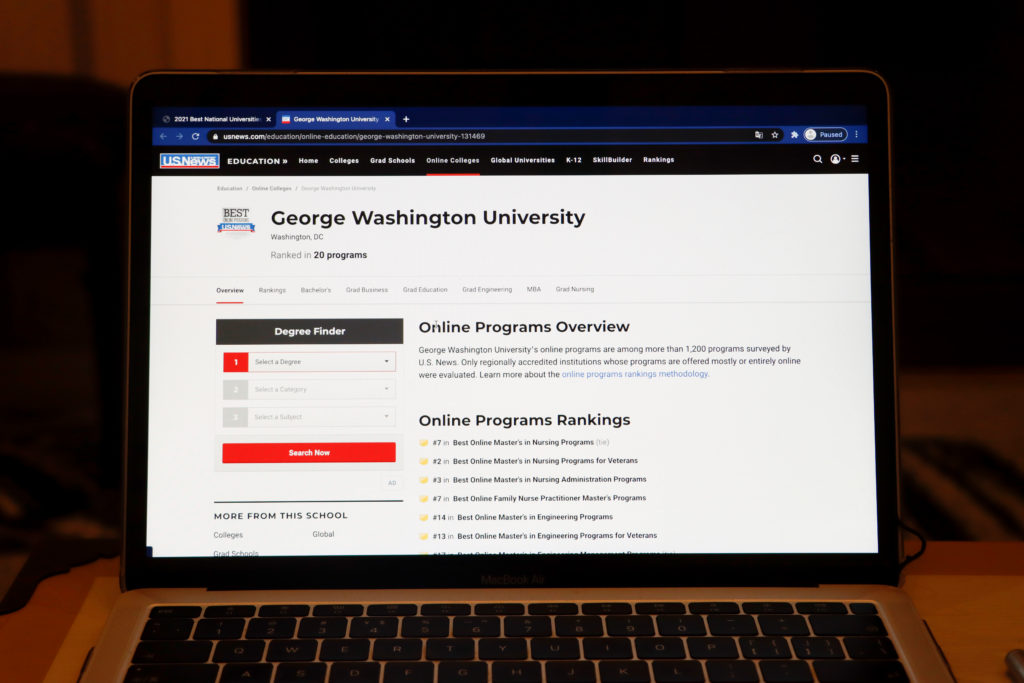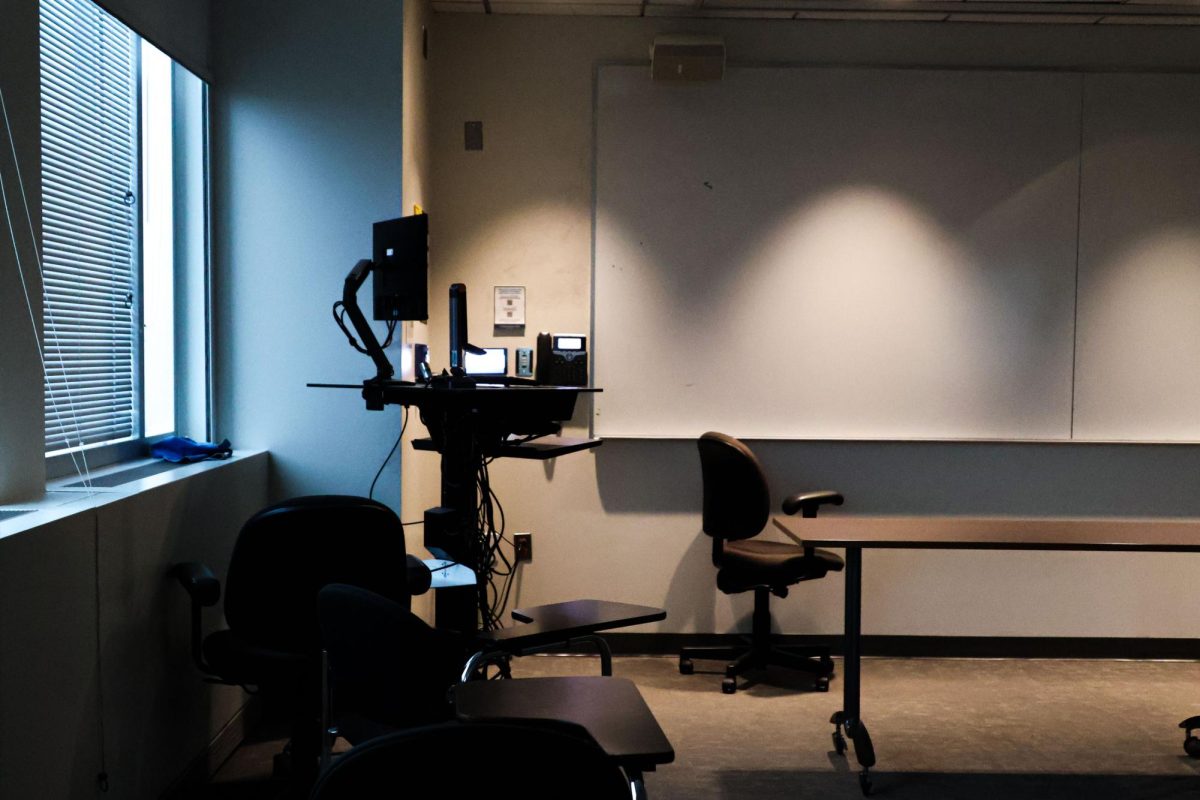With thousands of students learning through online classes during the COVID-19 pandemic, GW’s online programs held steady in their rankings in U.S. News and World Report earlier this semester.
The ranking placed the School of Nursing’s online master’s in nursing program seventh, the School of Engineering and Applied Science’s online master’s in engineering program 14th and the School of Business’s online master’s in business administration 20th nationwide. A majority of GW’s online programs saw slight improvements in their rankings this year, according to data provided by officials at the Office of Institutional Research and Planning.
“GW’s ranked online programs demonstrate our investment in virtual education and the dedication of the University’s faculty and staff in supporting and enhancing these programs,” Provost Brian Blake said in a University release. “We have gained valuable insight over the past several years of online education, particularly during the pandemic, and now are poised to embrace all the possibilities of academic innovation on the other side of COVID-19.”
Most of the online programs saw slight tweaks in their standing, with the online bachelor’s program increasing from 20th to 19th, the online MBA program from 22nd to 20th and the online master’s in engineering program from 15th to 14th.
Other programs saw some drops in their rankings, with the master’s in nursing program dropping from sixth to seventh and the master’s in education program having the most significant fall from 31st to 52nd, according to officials’ data. The education program ranked the lowest of all programs.
Others like the online master’s in non-MBA business programs were ranked around the middle of the pack compared to the rest of GW’s online programs at 24th.
Officials did not return a request for comment about the reasons for the changes in the rankings, whether they plan to expand and provide more support for online programs in the future and the implications that the rankings will have for the University.
Shahram Sarkani, the director of online and off-campus programs for SEAS and Engineering Management and Systems Engineering, said officials in the engineering school are “extremely proud” about the online master’s in engineering program reaching its highest ranking since about a decade ago, when it was ranked in the mid-60s. He said the achievement will help the program attract more “quality students” by raising the program’s profile.
“We believe, in the online stage, that the ranking is very significant because people aren’t bound geographically to go to the nearest college or university,” he said. “Actually, they can go anywhere in the nation or in the world for that matter.”
He said the program’s emphasis on assuring students have access to professors in an online environment, through strategies like frequent office hours and taped class sessions, has helped differentiate it from other universities’ programs that may not be using these techniques.
“A lot of universities just have lectures that play over and over like a horror movie so to speak,” he said. “But we made a conscious decision of offering live classes via the web so that students can actually ask professors live questions during class, listen in live and interact live with the professor and other students.”
He said SEAS officials reached out to him last spring to serve on a committee to help the engineering school’s initial transition to virtual instruction because of his experience with teaching online.
“We believe our experience and our program helped launch the rest of the school to successfully go online,” he said.
Sarkani said administrators for the program hope to reduce class sizes to no more than 20 per class from the current average of 30 to raise the University’s name recognition.
“Obviously, as you get closer to the top, it gets harder and harder to move up,” he said. “It’s getting tougher to move up, but our goal is to break into the top 10 in the near future.”
Experts in online education said online programs will likely play a greater role in higher education in the aftermath of the pandemic by boosting GW’s name recognition and providing students with a “valuable tool” to select high-quality programs.
Cassandra Ott-Kocon, the assistant director of online and transfer programs at the University of Arizona’s Eller College of Management, said online programs have seen “some growth” recently as many prospective students may be out of work or looking for career changes due to the pandemic.
She said the widespread transition to distance education over the past year has created new virtual resources that were previously unavailable to online programs, like electronic signature capabilities on online documents that speed up administrative requirements.
“There are processes being built to be long-term,” she said. “I don’t foresee, when things return to in person, that those tools will go away for our students.”
John Watret, the chancellor of Embry-Riddle Aeronautical University Worldwide Campus, said officials can improve their online programs’ design by “treating online as a separate modality of delivery” since the learning style in online classes is different from in-person classes. Embry-Riddle has in-person campuses in Florida and Arizona but largely operates online.
“Many schools fail in providing quality online programs when they try to recreate their face-to-face course and then just publish some of the content online and expect it to be similar to that,” he said.
Watret said he expects more schools to invest in creating and supporting the “online arms of their institutions,” especially since traditional faculty now have experiences in teaching virtually.
“One of the big takeaways is that the use of technology in the classroom is going to increase, whether it be in a truly online course or whether it be in a traditional in-person course,” he said.








